This article was co-authored by Susannah Kerwin, ANP-BC, HNP. Susannah Kerwin is a board certified Adult Nurse Practitioner in New York, New York. With over 10 years of experience, Susannah specializes in adult primary care, holistic medicine, and women’s healthcare. Susannah holds a Bachelor’s degree from the University of San Francisco. She obtained her MSN from New York University’s (NYU) unique dual degree program combining integrative and allopathic disciplines. Prior to becoming a Nurse Practitioner, Susannah worked for more than ten years as a Registered Nurse in psychiatric and surgical settings. Susannah also serves as an adjunct faculty member for NYU.
There are 10 references cited in this article, which can be found at the bottom of the page.
This article has been viewed 87,713 times.
The term cyst is a general term that refers to a closed or sac-like structure filled with semisolid material, gases, or liquid. Cysts can be microscopic or they can be quite large. Many ovarian cysts occur during the monthly ovulation, have no signs or symptoms, and are often harmless.[1] Learn how to figure out if you have ovarian cysts and what to do if you do have them.
Steps
Recognizing the Symptoms of Ovarian Cysts
-
1Check for abdominal abnormalities. One of the most common symptoms of ovarian cysts are abdominal abnormalities or problems. You may experience abdominal bloating or swelling due to cysts. You may also feel some kind of pressure or fullness of the lower abdomen.
- You may also experience unexplained weight gain.[2]
- You may also feel pain at the lower right or the lower left side of the abdomen. Rarely, there may be pain at both right and left sides. The pain may be inconsistent and come and go. The pain may be sharp or dull.
-
2Monitor for problems with excretory functions. Some less common symptoms of ovarian cysts may cause some problems with your normal excretions. You may have some trouble urinating or a feeling of pressure on your bladder. This can cause an increased frequency of urination or difficulty emptying the bladder completely. You may also have difficulty having a bowel movement.[3]
- If a cyst ruptures, the pain can be sudden and severe, which may cause nausea and vomiting.
Advertisement -
3Watch for sexual discomfort. Other uncommon symptoms of ovarian cysts may include sexual discomfort. You may experience pain during sexual intercourse. You may also feel pain in the pelvic area, or in the lower back and thighs. Your breasts may also feel more tender than normal.
- You may also experience pain during your menstrual cycle, or experience abnormal vaginal bleeding not during your normal period.[4]
-
4Identify the risk factors for ovarian cysts. There are a number of possible risk factors that may lead to ovarian cysts. If any of these conditions apply to you and you experience the symptoms, you may be have ovarian cysts causing your pain or discomfort. The risk factors include:[5]
- A history of previous cysts
- Irregular menstrual cycles
- Beginning menstruation younger than 12
- Infertility or a history of infertility treatments
- Low thyroid function
- Treatment with tamoxifen for breast cancer
- Smoking and use of tobacco products
- Chronic inflammatory conditions
Getting Medical Treatment for Ovarian Cysts
-
1See your doctor. If you know you have an ovarian cyst and experience either sudden abdominal pain or pain along with nausea, vomiting, and fever, call your physician or go to the ER right away. If you experience cold, clammy skin or any rapid breathing or lightheadedness, call your physician or go to the ER right away.
- If you are postmenopausal and have an ovarian cyst, you should know that this puts you at higher risk for ovarian cancer. You should be evaluated using an ultrasound and have a blood test for CA125 and/or OVA1. These are markers for a number of different conditions, including ovarian cancer. OVA-1 is more specific for ovarian cancer. If there is any suspicion that the cyst may be cancerous, the cysts should be removed.[6]
-
2Have a pelvic exam. The symptoms of ovarian cysts are not diagnostic. To really know if you have an ovarian cysts, your doctor will perform a pelvic exam. Your doctor may be able to feel for swelling that is consistent with ovarian cysts.[7]
- Depending on your other symptoms, your doctor may want to order more tests to measure hormone levels and to rule out other conditions may be ordered as well.
-
3Expect to take a pregnancy test. A pregnancy test is also likely to be ordered by your doctor. If you are pregnant, you may have a corpus luteum cyst. This type of cyst occurs when your egg gets released, and the follicle fills with fluid.[8]
- Your doctor may also want to rule out an ectopic pregnancy. An ectopic pregnancy occurs with the embryo implants itself somewhere other than the uterus.
-
4Undergo imaging tests. If your doctor determines that you have a cyst, you will likely have to have some imaging tests, such as an ultrasound. These imaging tests are used to locate and characterize an ovarian cyst.[9]
- The imaging tests will help your doctor determine the size, shape, and exact location of the cyst. It also helps your doctor learn if the cyst is filled with fluid, solid, or mixed.
-
5Treat ovarian cysts. For most women, watchful waiting is recommended as long as the symptoms are manageable. Remember, most ovarian cysts disappear on their own. For some women, using hormones in the form of birth control pills may be recommended.[10] About five to 10% of women may need surgery to remove cysts.[11]
- Small complex cysts can be removed from a laparoscopy. In a laparoscopy, the doctor will make a small cut on your belly and remove the cyst through cuts in your skin.[12]
- For more severe, large, or potentially cancerous cysts, you may undergo a laparotomy. A larger cut is made in the belly, and the entire cyst or the ovary may be removed.
Identifying the Types of Ovarian Cysts
-
1Learn the causes of ovarian cysts. During the monthly cycle, one or both of a woman's ovaries release an egg. Cysts can form in the ovary because of hormonal problems or imbalances, an obstruction to fluid flow, an infection, conditions producing a chronic inflammation such as endometriosis, inherited conditions, pregnancy, age, and a number of other causes.[13] [14]
- Ovarian cysts are quite common in women during the reproductive years and most have no symptoms. These are called functional cysts. Most of the time, functional ovarian cysts resolve without treatment.
- Ovarian cysts are less common after menopause and do put any postmenopausal woman with cysts at a higher risk for ovarian cancer.
-
2Know that functional cysts are not serious. Functional cysts are either follicle cysts, which occur in the area of the ovary where individual eggs mature, or corpus luteum cysts, which occur in what is left of an empty follicle after the egg has been released. These are a normal part of the function of the ovaries.[15] Most follicle cysts are painless and disappear in one to three months.
- Corpus luteum cysts usually disappear in a few weeks, but can get large, get twisted, bleed, and cause pain. Corpus luteum cysts can be caused by drugs (like clomiphene) used in fertility treatments.
-
3Identify nonfunctional cysts. There are other types of ovarian cysts that nonfunctional. This means that they are not related to normal ovarian function. These cysts may be painless or cause pain. They include:[16]
- Endometriomas: These cysts are generally related to a condition called endometriosis where uterine tissue grows outside the uterus.
- Dermoid cysts: These are formed from embryonic cells from the woman, not from a fetus. These are usually painless.
- Cystadenomas: These cysts can be large and filled with a watery fluid.
- In Polycystic Ovary Syndrome (PCOS), a large number of cysts are formed. This is a condition very different from having a single ovarian cyst.
Expert Q&A
-
QuestionHow can I treat an ovarian cyst?
 Susannah Kerwin, ANP-BC, HNPSusannah Kerwin is a board certified Adult Nurse Practitioner in New York, New York. With over 10 years of experience, Susannah specializes in adult primary care, holistic medicine, and women’s healthcare. Susannah holds a Bachelor’s degree from the University of San Francisco. She obtained her MSN from New York University’s (NYU) unique dual degree program combining integrative and allopathic disciplines. Prior to becoming a Nurse Practitioner, Susannah worked for more than ten years as a Registered Nurse in psychiatric and surgical settings. Susannah also serves as an adjunct faculty member for NYU.
Susannah Kerwin, ANP-BC, HNPSusannah Kerwin is a board certified Adult Nurse Practitioner in New York, New York. With over 10 years of experience, Susannah specializes in adult primary care, holistic medicine, and women’s healthcare. Susannah holds a Bachelor’s degree from the University of San Francisco. She obtained her MSN from New York University’s (NYU) unique dual degree program combining integrative and allopathic disciplines. Prior to becoming a Nurse Practitioner, Susannah worked for more than ten years as a Registered Nurse in psychiatric and surgical settings. Susannah also serves as an adjunct faculty member for NYU.
Nurse Practitioner Ovarian cysts happen because of the activity of the ovaries, so mainly the treatment for that is going to be birth control because you're shutting down the activity of the ovaries and that allows your ovaries to basically rest and not create ovarian cysts.
Ovarian cysts happen because of the activity of the ovaries, so mainly the treatment for that is going to be birth control because you're shutting down the activity of the ovaries and that allows your ovaries to basically rest and not create ovarian cysts.
References
- ↑ http://www.womenshealth.gov/publications/our-publications/fact-sheet/ovarian-cysts.html
- ↑ http://www.womenshealth.gov/publications/our-publications/fact-sheet/ovarian-cysts.html
- ↑ https://www.nhs.uk/conditions/ovarian-cyst/
- ↑ http://www.nhs.uk/Conditions/Ovarian-cyst/Pages/Introduction.aspx
- ↑ https://www.nhs.uk/conditions/ovarian-cyst/
- ↑ http://womensvoicesforchange.org/ovarian-cysts-in-post-menopausal-women-what-to-look-for-and-what-to-ask.htm
- ↑ http://www.womenshealth.gov/publications/our-publications/fact-sheet/ovarian-cysts.html
- ↑ http://www.mayoclinic.org/diseases-conditions/ovarian-cysts/basics/tests-diagnosis/con-20019937
- ↑ http://www.womenshealth.gov/publications/our-publications/fact-sheet/ovarian-cysts.html
- ↑ Susannah Kerwin, ANP-BC, HNP. Nurse Practitioner. Expert Interview. 28 August 2020.
- ↑ http://www.mayoclinic.org/diseases-conditions/ovarian-cysts/basics/treatment/con-20019937
- ↑ http://www.nhs.uk/Conditions/Ovarian-cyst/Pages/Treatment.aspx
- ↑ http://www.womenshealth.gov/publications/our-publications/fact-sheet/ovarian-cysts.html
- ↑ http://www.medicinenet.com/cyst_symptoms_and_causes/views.htm
- ↑ https://www.mayoclinic.org/diseases-conditions/ovarian-cysts/symptoms-causes/syc-20353405
- ↑ https://www.mayoclinic.org/diseases-conditions/ovarian-cysts/symptoms-causes/syc-20353405
About This Article
Many ovarian cysts have no signs or symptoms and are completely harmless, but there are a few symptoms you can look out for to help you know if you have one. The most common symptoms are abdominal swelling or bloating that feels like a pressure or fullness in your lower abdomen. Sometimes, you can feel pain on the lower right or left side of your abdomen that can feel sharp or dull. You may also have trouble urinating or feel like there’s pressure on your bladder. More uncommon symptoms include pain during sexual intercourse, pain in your pelvic region, and tenderness in your breasts. If you have any of these symptoms, make an appointment to see your doctor to find out if you have an ovarian cyst. To learn about the risk factors for ovarian cysts, keep reading.
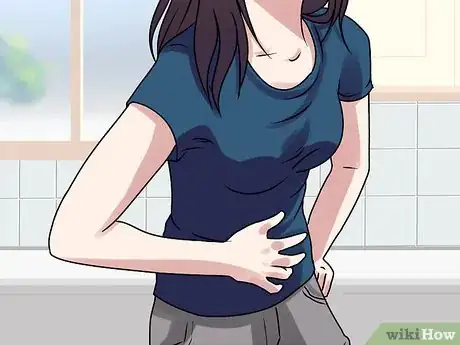

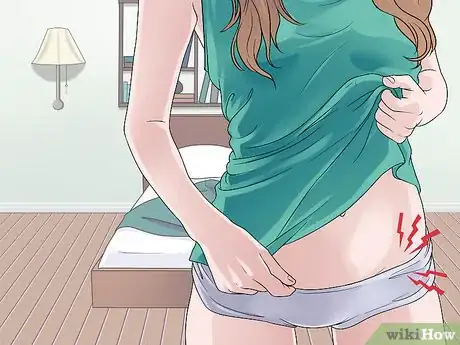
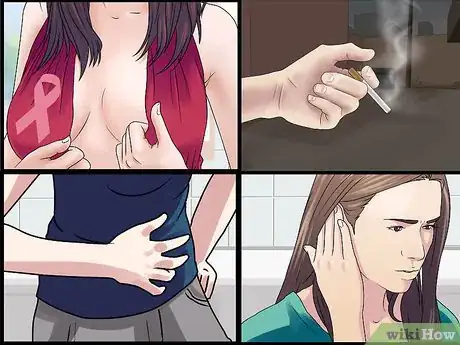
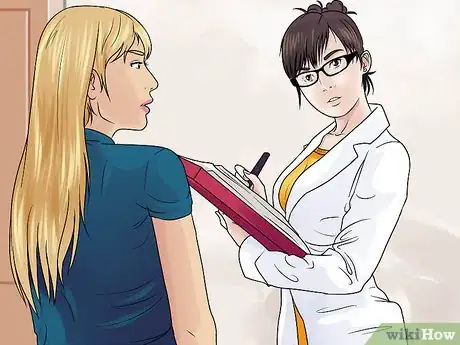
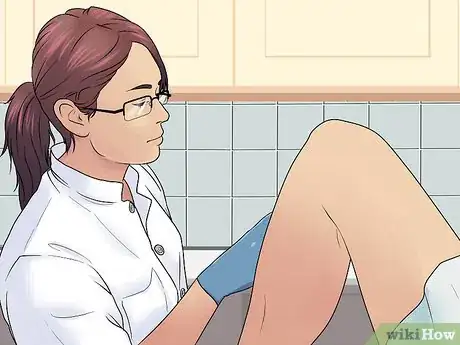
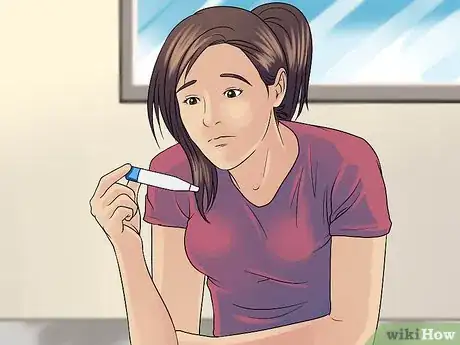
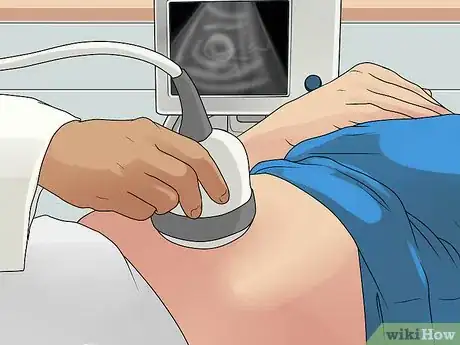
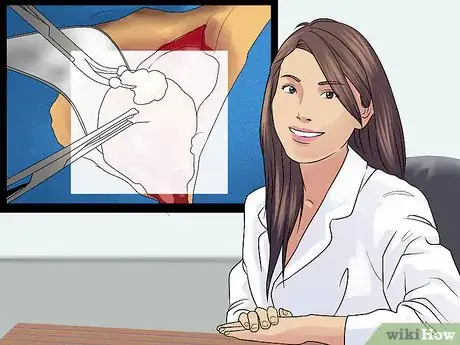

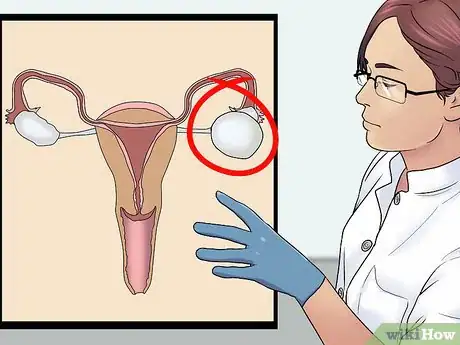
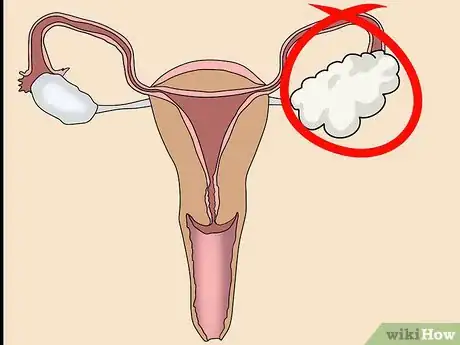
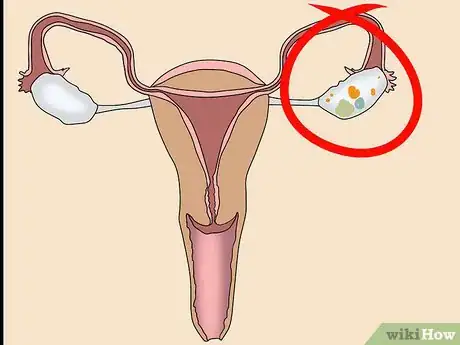
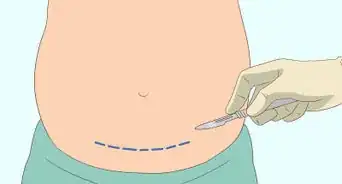

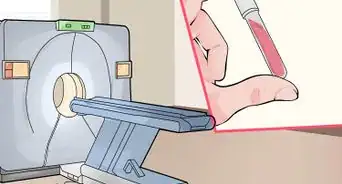
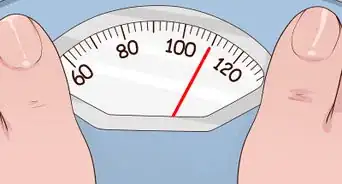

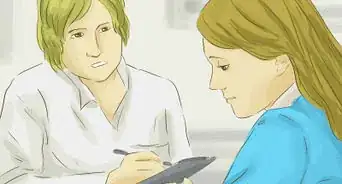
-Step-11.webp)

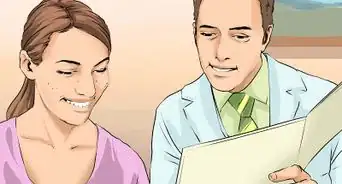

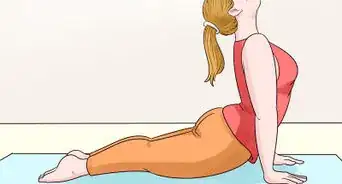









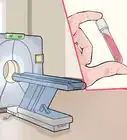
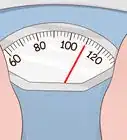



































Medical Disclaimer
The content of this article is not intended to be a substitute for professional medical advice, examination, diagnosis, or treatment. You should always contact your doctor or other qualified healthcare professional before starting, changing, or stopping any kind of health treatment.
Read More...